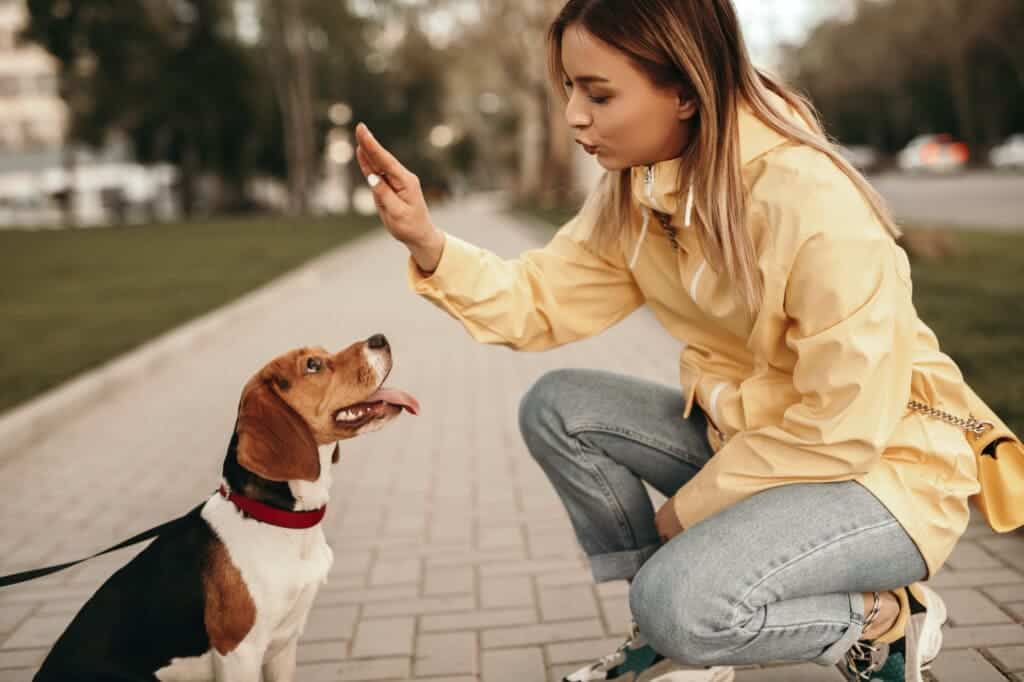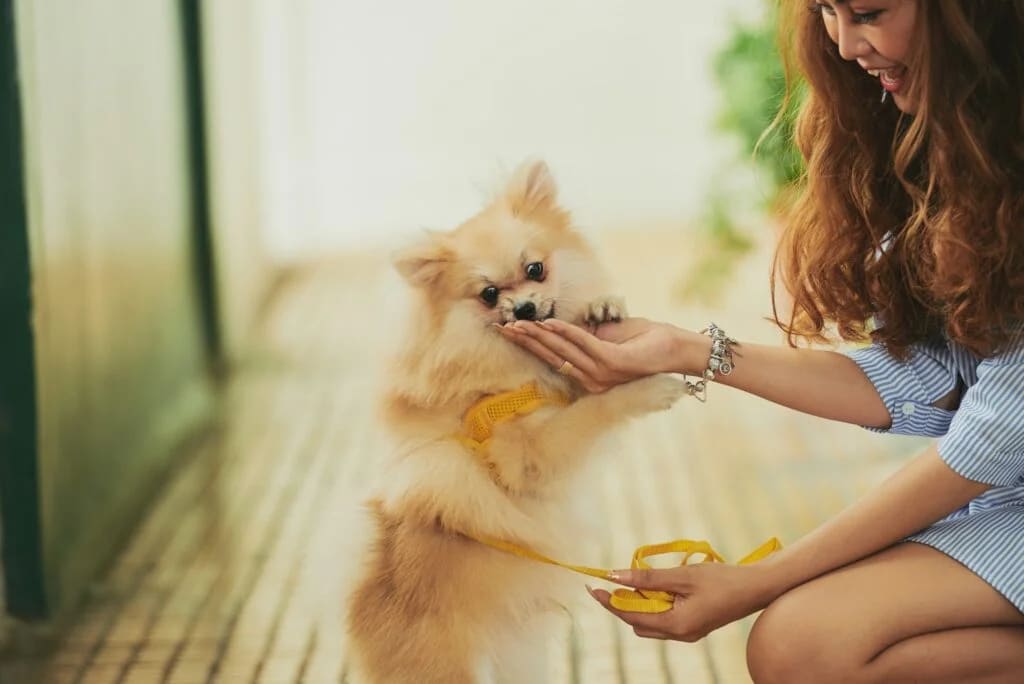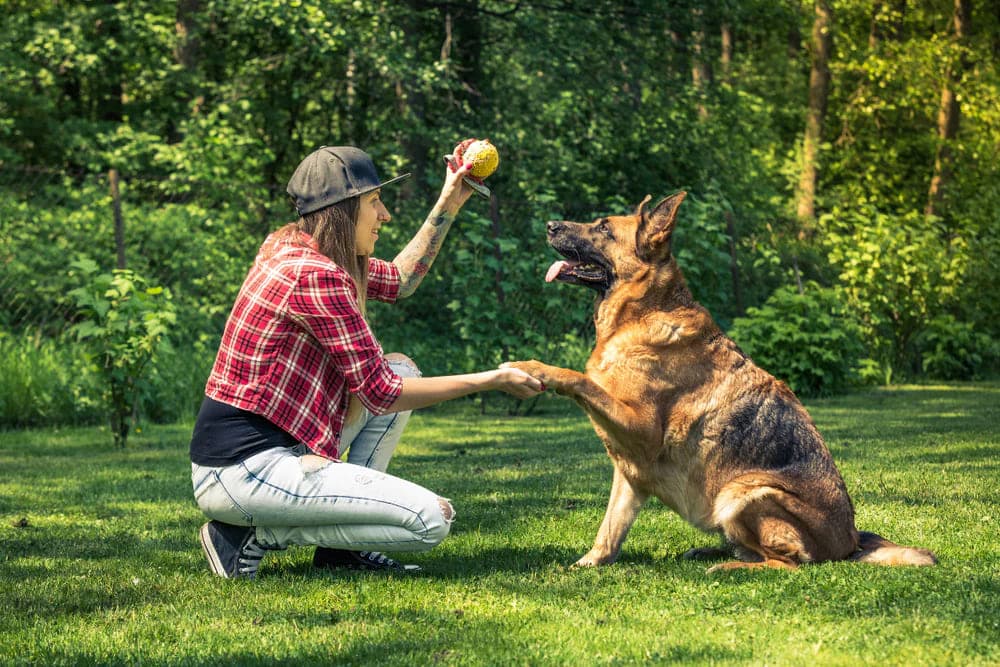Table of Contents
Do you want your dog to feel safe no matter if they are hunting dogs and have gone through hunting dog training or a pet who is learning basic commands? It is important that if your pet is being your emotional support companion, you create a safer and secure environment for them. This is where bubble theory dog training jumps in. This theory simply relates to creating a welcoming environment for your furry fellow where he can learn best. They are able to sense the air and stress-free environment. This tends to increase their productivity. Moreover, this training method has proven to be effective due to the ways it is used.

Understanding Bubble Theory Dog Training
Before going deep into the bubble training, let me introduce you to the joy of Bubble Dog Theory training. It’s not your typical technique; the key is to recognize the boundaries and communication preferences of your pet. This training method provides a special path to companionship for dog owners looking for a deeper connection. Positive reinforcement and respecting each dog’s personal bubble help dogs learn to trust and respond joyfully. With training methods based on consistency and nonverbal cues, This theory fosters a peaceful home where your dog and you can live happily ever after. Are you prepared to learn this fruitful training program with me? Now, let’s get started!

Bubble Theory Dog Training
Let’s see how you can train your dog using the famous bubble theory.
1. Assess the Needs of Your Dog: First Step in Bubble Theory Dog Training
Determine whether your dog is apprehensive or anxious. This understanding will enable you to adapt your strategy to fit their personality and progressively win their trust. Understanding your dog’s temperament and behavior is essential to determining their needs, especially when considering Bubble Theory Dog Training. This stage guarantees that you meet their specific needs and comfort zones. In addition to thinking about the ideas behind Bubble Theory, pay attention to your pet’s reactions to different stimuli and circumstances. By doing this, you can modify your training methods to help your dog develop confidence and trust.
2. Introduce Positive Reinforcement: Know the Importance of Bubble Theory Dog Training
To start training, provide treats, compliments, or playtime for desired actions. This promotes your dog’s association of training with good things. Positive reinforcement is introduced in this training method for dogs. Moreover, it is used to reinforce desired behaviors with playtime, rewards, or praise in order to promote learning and improve the relationship between owners and their furry friends. It’s a fundamental component of this theory for dog training, in addition to fostering trust.
3. Bubble Theory Dog Training: Respect Personal Space
Pay attention to your dog’s personal space throughout training sessions. By letting them come to you at their own speed, you can create a feeling of security and confidence. In this theory for dog training, respecting your dog’s personal space bubble entails recognizing and valuing it. Allow them the freedom to make contact and come closer at their own leisure. This method increases comfort and trust, which improves training efficacy. Moreover, it fosters a constructive and pleasant partnership.
4. Use Non-Verbal Cues
The next important step in bubble dog theory is to Use gestures and body language to communicate with your dog. This improves communication and fortifies your relationship.
Among the non-verbal clues are:
Body Language: Your dog may learn a lot from your posture, gestures, and general mannerisms. To indicate to your dog to “stay,” for instance, stand tall and hold up your hand with an open palm; to encourage your dog to approach you, stoop down and extend your arms.
Gestures: You can use hand signals or gestures to help your dog learn spoken orders or act as independent cues. For example, pointing to the floor can suggest “sit,” yet putting your fingers together and reaching forward can mean “stay.”
Facial Expressions: During training, you can communicate your feelings and objectives to your dog by making facial expressions like a smile or a furrowed brow. Dogs are skilled at understanding human facial expressions.
Eye Contact: Making and keeping eye contact with your dog can be a very effective method to express encouragement, focus, and attention. It’s important to consider your dog’s comfort level with eye contact, though, as some may find extended eye contact frightening.
5. Start with Basic Commands
Teach basic commands with gentle encouragement and direction, such as sit, remain, and come. To reinforce learning, repeat these exercises on a regular basis.
6. Progress Gradually: An Important Step in Bubble Theory Dog Training
As your dog gains self-assurance, progressively provide him with harder tasks and directives. As you modify the tempo to your dog’s comfort level, be kind and patient.
7. Address Fearful Behaviors using Bubble Theory Dog Training
If your dog exhibits anxious or fearful behaviors, deal with them patiently and compassionately. Seek advice from a qualified trainer for specific direction if necessary. A dog trainer uses Bubble Theory Dog Training to address nervous behaviors by trying to identify the underlying causes of anxiety and fear. Fearful dogs can overcome their fears by using the theory to create a stress-free environment and positively reinforce desired behaviors. Moreover, this strategy heavily relies on empathy and patience.
8. Create a Safe Environment by Bubble Theory Dog Training
Make sure training sessions take place in a quiet, stress-free setting that is free of outside distractions or any triggers. It’s important to create a secure training environment, particularly for fearful dogs. Make sure there are no possible stresses or risks in the training area. To help them feel secure, use training techniques that are gentle and in line with Bubble Theory Dog Training. To encourage relaxation, provide access to water and cozy bedding. Additionally, create a schedule that dogs may become accustomed to and feel secure in their environment by following. Effective training sessions are facilitated by a friendly environment that fosters trust.
9. Celebrate the Progress of Your Furry Friend
Acknowledge and celebrate your dog’s minor victories along the road. Your relationship with your furry friend is strengthened when you provide them with positive reinforcement.
However, keep in mind that each dog is different, and depending on their needs and temperament, this training theory for dogs can and might need to be adjusted. Moreover, persistence and patience are essential for success. In the meantime, relish the process of training your dog and developing a solid, trustworthy bond with them.
If you want to know about the myths related to Bubble Theory Dog training, check out Adonis David’s blog.

Benefits of Bubble Theory Dog Training
If you decide to train your dog using the bubble theory, it can render several benefits to the overall bond between you and your dog. So, this section of the article will focus on the advantages of the bubble dog theory training manual. Let’s see what are the benefits linked to this theory:
1. Promotes Trust between You and Your Furry Friend
The first benefit that is linked to this Theory for dog training is that fosters trust between dogs and their owners by honoring a dog’s personal space and communication cues.
2. Reduces Stress
By creating a stress-free training environment, this approach helps anxious dogs feel less anxious and encourages relaxation.
3. Improves Communication between You and Your Pet
Coming towards the next benefit, this training method for dog improves communication between dogs and their owners by emphasizing non-verbal clues and body language, which promotes collaboration and deeper understanding.
4. Encourages Positive Behavior and Reinforcement
The application of positive reinforcement methods in this Theory of Dog Training leads to a harmonious relationship by encouraging dogs to exhibit desired behaviors freely.
5. Adjusted to Individual Needs and Temperament of Dogs
This training method for dogs customizes methods of training to fit each dog’s temperament and preferred learning style since it recognizes that every dog is different.
6. Strengthens Bond by Bubble Theory Dog Training
The next benefit of Bubble Theory Dog Training is bonding. It develops a stronger connection and companionship by strengthening the bond between dogs and their owners through continuous training and mutual respect.
7. Empowers Dogs by Bubble Theory Dog Training
This behavior theory for dogs gives dogs the confidence and security to feel more comfortable in their surroundings by letting them learn at their own speed and respecting their boundaries.
8. Promotes Long-Term Behavioral Modification
The cornerstones of this theory for dog training and behavior lie in creating a strong basis of mutual respect and comprehension, which paves the way for sustained success in behavior modification and training.
A happier, healthier relationship between dogs and their owners can result from using Bubble Theory Dog Training, and the advantages carry over outside of training sessions into everyday life.
Conclusion
Summing up what has been discussed so far, the bubble theory dog training is a friendly method to train your dog for good manners. Following this unique method, one can train their furry fellows to acquire the best skills. It can help create a safe space around them so they feel secure and valued. The more they feel valued, the stronger the bond between you and your pet. So, following our article guide, try out this training method now.
Respect the Bubble for PAWsitive Results!

